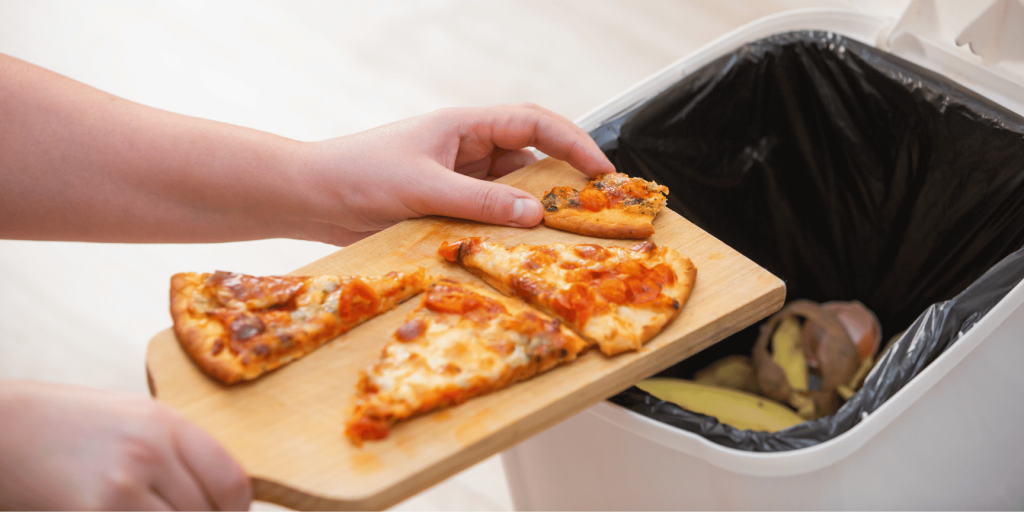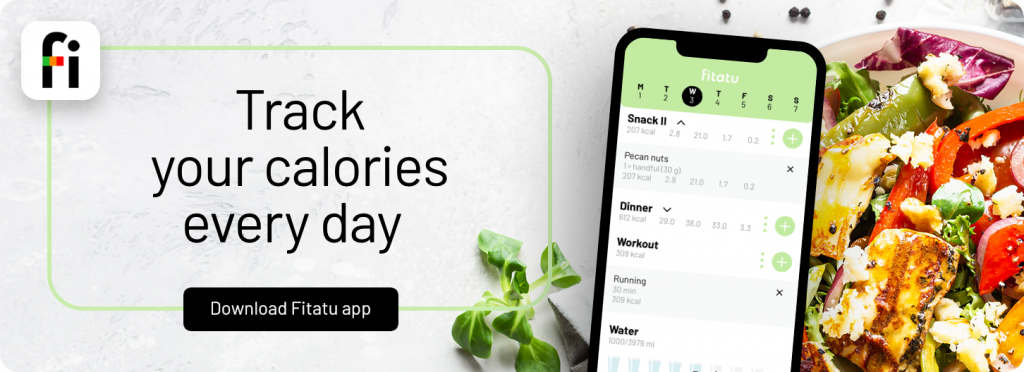How not to waste food? 4 useful tips

Despite the resolution that this is the last time, are you again throwing food away? Learn simple tricks that will teach you how not to waste food and thus not throw your money away.
Did you know that ⅓ of food is wasted? Moreover, these data are even more shocking considering that 828 million people in the world are starving at this time. Food waste is also a big environmental problem. The water footprint associated with waste and food loss at the production stage is about 250 km2, while the carbon footprint is estimated at 3.3 tons of CO2 (this is also influenced by the disposal of waste for disposal).
It is not without reason that in recent years, movements such as “less waste” or “zero waste” have become increasingly popular around the world. Their goal is to prevent excessive throwing away and thus wasting of products, including food.
Causes of food waste
How not to waste food? First, it’s worth knowing the reasons:
- not planning meals,
- shopping without a list,
- shopping while hungry,
- preparing too large portions of meals and lack of management of surpluses (e.g. freezing, canning),
- overlooking the expiry date and misunderstanding the terms “best before” and “use by”,
- buying too many vegetables and fruits at once.
There’s a bit of it, but we also have good news! Knowing the reasons, you can remedy this, and we are just starting to help you!
4 useful tips
Learn 4 useful tips to help you avoid wasting food:
- PLANNING – buying what is needed and not succumbing to whims or promotions.
- STORAGE – how you arrange things on the shelf in the fridge matters a lot.
- PROCESSING – even leftovers can be used to prepare a tasty meal.
- SHARE – if you know you don’t want to or don’t feel like eating something, share it with others.
Sounds easy, but you don’t know how to implement these rules in life? In the next paragraph, you will learn specific tips on how to apply them in practice.
How not to waste food, or rules in practice
Planning
Planning and good organization are the first and most important elements when it comes to not wasting food. By planning meals and making only necessary purchases, you won’t have to worry about what to do to avoid wasting food. You can read more about smart shopping planning and how the Fitatu® app can be helpful for this here.
Storage
Refrigerator
Usually, we do not pay much attention to how we store food in the refrigerator. This is a significant mistake! Each shelf in the fridge has a different temperature and is dedicated to different types of food. So how should you arrange products in the fridge? Generally, at the bottom, we should keep products that require a lower temperature, such as raw meat or fish. Higher up, we should place cheeses, cold cuts, or ready-made meals, and at the very top, dairy or cakes.
To learn how to best utilize the potential of your fridge, read its manufacturer’s specifications. It is also worth paying attention to arranging products with the shortest shelf life at the front. This will allow you to use them first.
Vegetables and Fruits
Although vegetables and fruits have their designated place in the fridge (the bottom drawers), not all should be stored there. The fridge is the right place for vegetables and fruits such as raspberries, blueberries, strawberries, cherries, and berries, as well as lettuce, root vegetables, cauliflower, broccoli, or radishes. Others can be stored at room temperature without any problem.
It’s important to remember to wash fruits and vegetables only before consumption. Water can promote the growth of microorganisms, which will result in premature spoilage of food.
Bread
Bread is one of the most frequently wasted products. Bread should be stored in a linen bag. Storing it in plastic, in which it is most often sold, can cause it to mold quickly.
Pro tip: If you want to approach shopping even more consciously and in the spirit of “less waste”, go to the bakery with your linen bag and ask the seller to pack the bread in it. The same rule applies to buying vegetables and fruits, which are better off packed in reusable bags instead of plastic nets. Think about how much less plastic you will use thanks to this small change, which would ultimately end up in the trash.
Processing
Freezing
Freezing is a safe method of preserving food, but remember that the same product should not be frozen twice. This poses a risk of multiplying pathogenic bacteria. Therefore, it is advisable to freeze products or ready-made meals in small portions. This will allow you to defrost exactly the amount of product you need at a given time and not waste the rest. For freezing, it is worth using zip-lock bags in various sizes.
What to freeze:
- chopped herbs (e.g., in a plastic box) to save them from wilting,
- fruits, vegetables (with low water content),
- meat, fish, cold cuts,
- yellow cheese,
- bread (portioned in bags of a few slices),
- ready-made meals, some cakes,
- broth, tomato concentrate, and coconut milk.
What not to freeze:
- fruits and vegetables with a high water content,
- egg-based sauces and eggs,
- liquid dairy products.
Canning
Canning is a great way to extend the shelf life of liquid dishes such as sauces or soups. Canning can be done by boiling closed jars in a pot, heating them in the oven, or even in a dishwasher! The jars and lids used for canning must be clean (sterilized) and dry. Otherwise, bacteria may develop, and the food will spoil.
Canning is also a great way to make meal preparation easier. Just cook a few more portions and can them, then open a jar during the week and dinner is ready.
Pickling
Fermentation has been a known form of extending product shelf life for centuries. It is worth remembering that not only cucumbers or cabbage can be fermented but many other vegetables, e.g., cauliflower, broccoli, or beetroot. Pickles are a great addition to meals. In addition to taste qualities, they are also a natural probiotic that contributes to improved gut health and immunity. You can read more about this in the article “Health begins in the gut.“
Preparing meals from leftovers
If the fridge is starting to look empty, but you still see leftovers, it’s time to unleash your creativity and try to prepare a meal from leftovers. It may not sound too appealing, but you’ll be surprised how surprisingly good things can be conjured up from them. If you lack inspiration, use the “Fridge” function in the Fitatu app. By entering the names of products such as broccoli, onion, yogurt, it will allow you to find a recipe for a dish containing these products.

How not to waste food? Share!
Facebook groups
Find a group on Facebook that unites people living in the spirit of “less waste” or “zero waste” in your city and share surplus food with others. Participants in these groups post about products or ready-made meals they want to share. You don’t have to worry about delivery – the interested person usually picks up the food themselves from your home.
Food sharing points
Food sharing points are a project implemented in large cities, supporting actions aimed at reducing food waste. In practice, it involves finding cabinets/refrigerators in various parts of the city or in the markets where anyone can put packaged food for someone else to use. The food should include the preparation date and is best packed in transparent containers.
Share with a neighbor
Maybe you don’t have to look far, and someone is living near you who would gladly accept a meal or products. Students looking to save money or older people who find cooking difficult might happily accept such a gift.
Supporting Actions Against Food Waste
Apps supporting food waste reduction
Technology comes to the rescue in the matter of how not to waste food. Thanks to apps like “Too Good To Go” you can buy products from supermarkets or meals from restaurants in your area for a much lower price. Their low price is because they can no longer be sold the next day, e.g., due to the end of the expiry date. However, this does not mean that they are not fit for consumption. Using these apps contributes even more to preventing food waste and also takes care of your finances.
Remember to use these apps wisely and make purchases when you know you can use them in a short time.
Take advantage of end-of-day promotions in shopping centers
Most supermarkets offer -50% discounts at the end of the day on products with a short expiry date. By taking advantage of these promotions, you not only care for your wallet but also ensure that these products do not end up in the trash.
Fitatu® App
Looking for more ways on how not to waste food? Start planning your meals! Download the app for free from the Play Store or Apple Store now and find out that dieting has never been so easy! Want access to all additional recipes with step-by-step photos? Opt for the Fitatu® Premium plan.
ATTENTION! For blog readers, we have prepared a special discount code: STOP-FA. Go to https://www.fitatu.com/app/order-and-payment and grab a 20% discount on annual Fitatu® Premium plans. Psst… the code combines with promotions!
What else will you find in Fitatu® Premium?
- Over 2000 recipes plus dozens of new ones every month,
- Additional intermittent fasting plans,
- The ability to create shopping lists,
- 6 ready-made meal menus,
- Filtering products and recipes,
- More synchronization with fitness apps,
- Access to the web version of the app,
- No ads.
Fitatu® Support Group
Looking for support on your journey to achieving your dream figure? Join the Fitatu group on Facebook: Fitatu – support and motivation. Meet like-minded people: in our group, you’ll find individuals who, just like you, are striving to improve their health and well-being. Exclusive events and promotions also are waiting there: stay updated with events and promotions exclusively for group members. We’re waiting for you!
Bibliography:
- Pandey, A. “FOOD wastage: causes, impacts and solutions.” Science Heritage Journal (GWS) 2021, 5.1: 17-20.
- https://bankizywnosci.pl/wp-content/uploads/2022/10/Raport-SDZ_zero-waste.pdf





